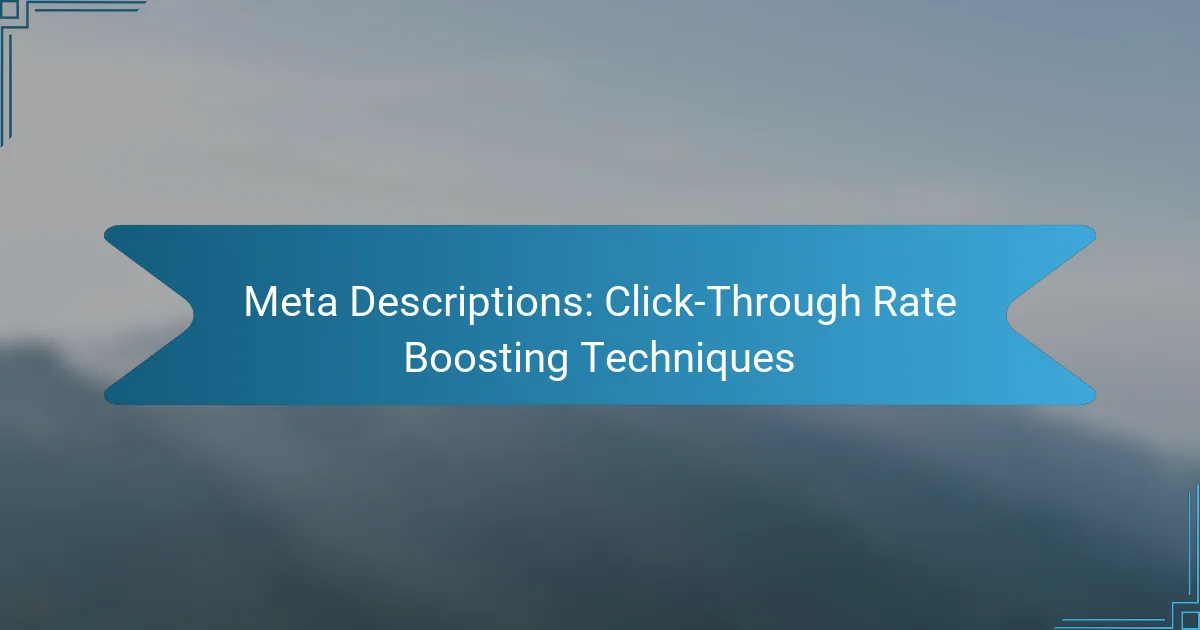Meta descriptions play a crucial role in boosting click-through rates (CTR) by summarizing webpage content in a way that captivates potential visitors. By employing effective techniques, you can create compelling descriptions that not only attract attention but also clearly communicate the value of your content, encouraging users to click on your link.

How Can Meta Descriptions Improve Click-Through Rates?
Meta descriptions can significantly enhance click-through rates (CTR) by providing concise summaries of webpage content that attract user interest. A well-crafted meta description encourages users to click on a link by clearly conveying the value of the content they will find.
Increased visibility in search results
Meta descriptions play a crucial role in improving visibility in search results by acting as a preview of the content. When search engines display a relevant meta description, it can stand out among other listings, drawing more attention from users. This increased visibility can lead to higher CTRs, especially when the description contains targeted keywords.
To maximize visibility, keep meta descriptions between 150-160 characters. This length ensures that the entire description is displayed in search results without being cut off, allowing users to read the full message.
Enhanced user engagement
Engaging meta descriptions can capture user interest and encourage them to click through to your site. By using action-oriented language and posing questions, you can create a sense of curiosity or urgency. Phrases like “Discover,” “Learn,” or “Get started” can prompt users to take action.
Consider A/B testing different meta descriptions to see which versions yield better engagement. Small changes in wording or tone can lead to noticeable differences in CTR, allowing you to refine your approach based on user preferences.
Better alignment with user intent
Aligning meta descriptions with user intent is essential for attracting the right audience. A description that accurately reflects the content of the page and addresses the needs or questions of potential visitors will resonate more effectively. This alignment helps ensure that the clicks you receive are from users genuinely interested in your content.
To achieve this, conduct keyword research to understand what users are searching for related to your topic. Incorporate these keywords naturally into your meta descriptions while maintaining clarity and relevance to the content on the page.
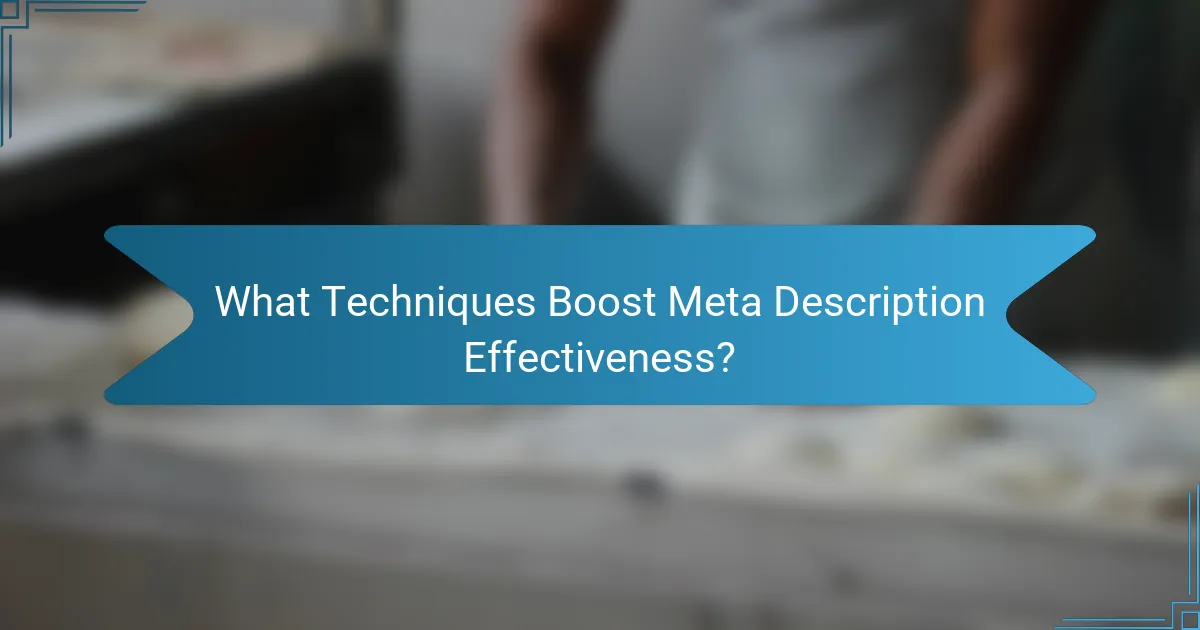
What Techniques Boost Meta Description Effectiveness?
Effective meta descriptions can significantly enhance click-through rates (CTR) by attracting users’ attention and encouraging them to click on your link. Implementing specific techniques can make your meta descriptions more compelling and relevant to searchers.
Incorporating target keywords
Including target keywords in your meta descriptions helps align your content with user search queries, improving visibility in search results. Aim to place the primary keyword near the beginning of the description to capture attention quickly.
For example, if your article is about “budget travel tips,” ensure that phrase appears prominently in the meta description. This tactic not only boosts relevance but also signals to search engines that your content is pertinent to the user’s intent.
Using action-oriented language
Action-oriented language encourages users to take specific steps, such as “discover,” “learn,” or “get started.” This type of wording creates a sense of engagement and motivates users to click through to your site.
For instance, instead of a passive description like “Our guide on travel tips,” use “Discover essential travel tips for exploring Europe on a budget.” This approach makes the description more inviting and dynamic.
Creating a sense of urgency
Creating a sense of urgency in your meta descriptions can prompt users to act quickly, increasing the likelihood of clicks. Phrases like “limited time offer” or “act now” can convey urgency effectively.
For example, a description like “Book your summer getaway now and save 20%!” not only highlights a discount but also encourages immediate action. Be cautious, however, to ensure that any urgency you create is genuine and not misleading, as this can lead to user dissatisfaction.
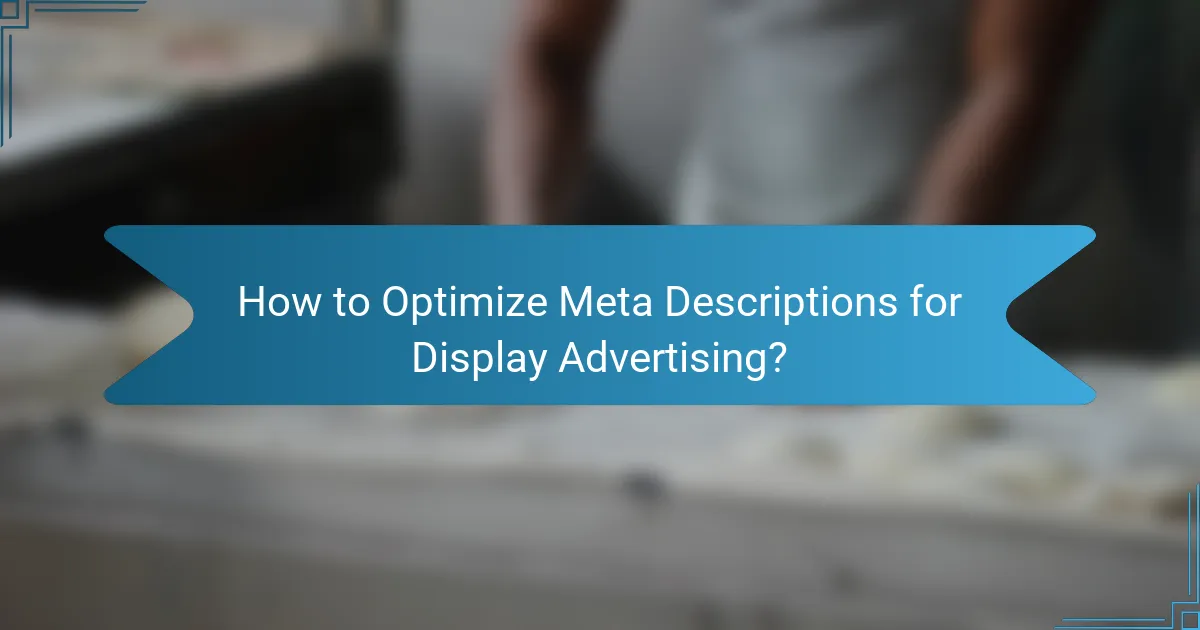
How to Optimize Meta Descriptions for Display Advertising?
Optimizing meta descriptions for display advertising involves crafting concise, compelling summaries that encourage clicks. These descriptions should highlight unique selling points and include relevant keywords to improve visibility and engagement.
Tailoring descriptions to target audience
Understanding your target audience is crucial for effective meta descriptions. Tailor your language, tone, and messaging to resonate with their interests and needs. For instance, if your audience is tech-savvy, use industry jargon and highlight innovative features.
Consider demographic factors such as age, location, and preferences. A description aimed at young adults might focus on trends and social proof, while one for professionals could emphasize efficiency and ROI.
Utilizing A/B testing for performance
A/B testing allows you to compare different meta descriptions to determine which performs better in terms of click-through rates. Create two or more variations of your description and monitor their performance over a set period.
Focus on elements like call-to-action phrases, length, and keyword placement. Aim for descriptions that are around 150-160 characters to ensure they display fully in search results. Analyze the data to refine your approach continuously.
Analyzing competitor strategies
Reviewing competitor meta descriptions can provide valuable insights into effective strategies. Identify what works well for them, such as phrasing, keywords, and emotional triggers. This analysis can inform your own descriptions and help you differentiate your offerings.
Use tools like SEMrush or Ahrefs to gather data on competitor performance. Look for patterns in successful descriptions and adapt those elements to fit your brand’s voice and goals, ensuring you stand out in the market.
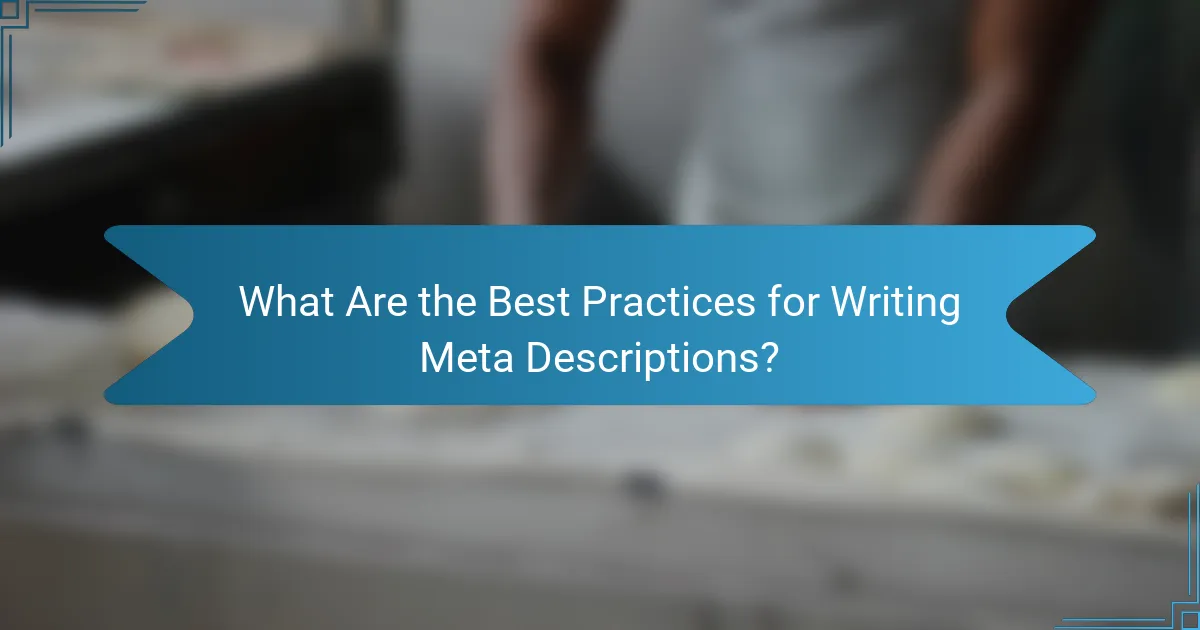
What Are the Best Practices for Writing Meta Descriptions?
Best practices for writing meta descriptions focus on crafting concise, compelling summaries of webpage content that encourage users to click through. Effective meta descriptions typically range from 150 to 160 characters, ensuring they are fully displayed in search results.
Keeping within character limits
Staying within character limits is crucial for meta descriptions, as search engines often truncate longer entries. Aim for 150 to 160 characters to ensure your description is fully visible, which can significantly impact click-through rates.
To check the length, use character counting tools or simply keep your descriptions concise and focused. A well-crafted meta description that fits within these limits can enhance visibility and engagement.
Ensuring uniqueness for each page
Each page on your website should have a unique meta description to avoid confusion and improve SEO. Unique descriptions help search engines understand the specific content of each page, which can lead to better rankings and user experience.
To create unique descriptions, summarize the key points of each page while incorporating relevant keywords. This practice not only aids in search engine indexing but also attracts the right audience to your content.
Including a call to action
Incorporating a call to action (CTA) in your meta descriptions can significantly boost click-through rates. Phrases like “Learn more,” “Get started,” or “Discover now” encourage users to take action and visit your page.
When crafting your CTA, ensure it aligns with the content of the page and resonates with your target audience. A strong, clear CTA can differentiate your listing from competitors and entice users to click through to your site.
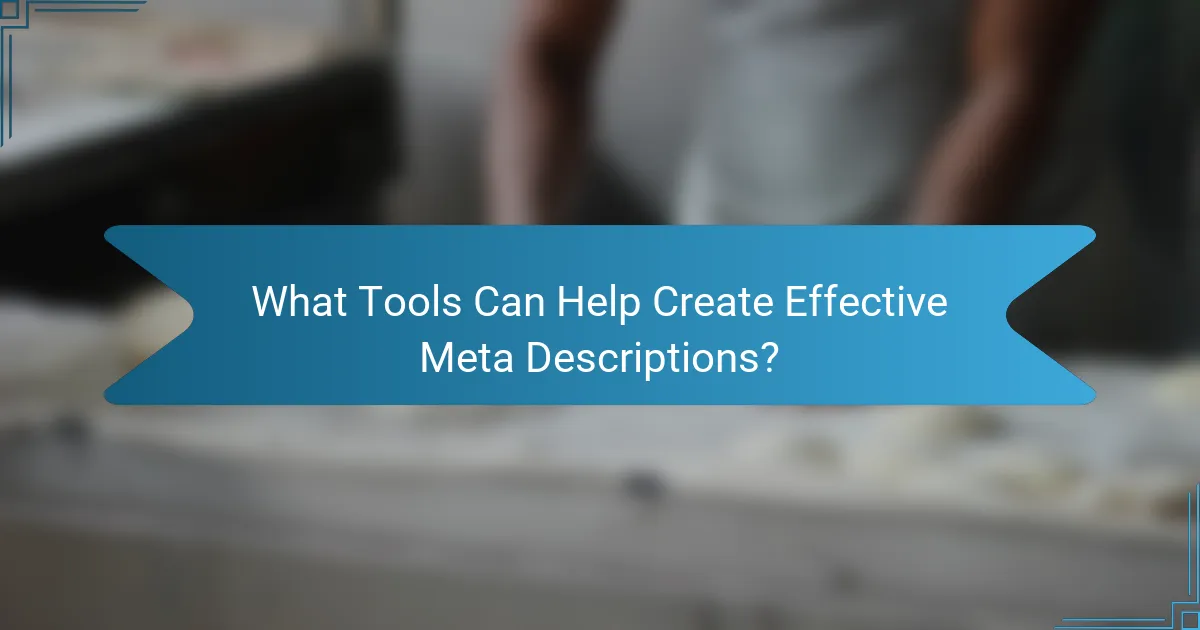
What Tools Can Help Create Effective Meta Descriptions?
Several tools can assist in crafting effective meta descriptions that improve click-through rates. Utilizing these tools can help identify relevant keywords, optimize content, and ensure your descriptions meet best practices for search engines.
SEMrush for keyword analysis
SEMrush is a powerful tool for conducting keyword analysis, which is crucial for creating compelling meta descriptions. It allows users to research keywords that are relevant to their content and assess their search volume and competition. By focusing on high-volume, low-competition keywords, you can enhance the visibility of your meta descriptions.
When using SEMrush, consider creating a list of primary and secondary keywords to incorporate into your meta descriptions. Aim for a natural flow that engages users while still adhering to the character limits typically recommended for meta descriptions, which is around 150-160 characters.
Yoast SEO for optimization tips
Yoast SEO is an invaluable plugin for optimizing your meta descriptions, especially for WordPress users. It provides real-time feedback on your descriptions, ensuring they are not only keyword-rich but also engaging and clear. The plugin highlights areas for improvement, such as length and readability, which can significantly impact your click-through rates.
To maximize the effectiveness of Yoast SEO, follow its suggestions closely. Use active voice, include a call to action, and ensure your meta description accurately reflects the content of the page. Avoid keyword stuffing; instead, focus on creating a compelling narrative that entices users to click through to your site.
